UV radiation is a form of electromagnetic radiation that mainly comes from the sun. There are three types of UV rays: UVA, UVB and UVC rays. UVA rays are the weakest, but they cause skin cells to age faster. UVB rays are a little stronger, and can cause sunburns and skin cancer. UVC rays from the sun react with the ozone and do not reach the ground.
Sunlight is main source of UV radiation and this radiation is at its strongest between 10 a.m. and 4 p.m., nearer the equator, at altitude, and may be increased or decreased by clouds and surface reflections. UV radiation from the sun can be blocked with clothes, hats, and sunscreen. Lip balm with SPF and sunglasses protect the lips and eyes from UV rays. In locations with strong sunlight, sunscreen should be applied regularly.
UV light interacts with a natural chemical in the skin called melanin. Melanin is your first line of protection and absorbs UV rays in order to shield your skin against sun damage; this chemical reaction is what gives skin a tan. When the amount of UV rays you’re exposed to exceeds the protection provided by melanin, however, you get a sunburn.
Man-made sources of UV radiation, such as tanning beds, have also been linked to cancer. Tanning beds are particularly damaging if used before the age of 20.
UV light causes many other undesirable effects that are not cancerous and repeated overexposure to UV rays can lead to various forms of skin damage including fine lines, wrinkles, age spots, freckles, and other discolorations. The skin becomes tougher, more leathery and dry scaly patches can appear (called actinic keratosis and thought to be the beginnings of skin cancer). Furthermore facial skin can become redder and new blood vessels can develop and become prominent.
Prevention and restoration:
At Dermatology Matters we aim to address all aspects of sun damaged skin both medical and cosmetic and where possible to combine treatments so as to provide optimal care.
Daily sun protection using a high quality sun block is an essential part of any skin care regimen and should be used daily. This is adequate for minimal exposure but SPF should be reapplied every 2-3 hours if exposed to more intense sunlight.








